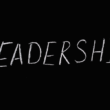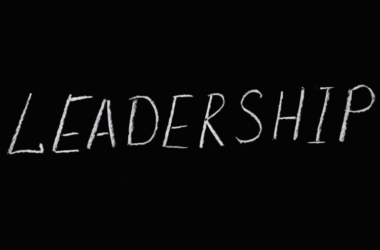Table of Contents Show
The ability to learn and grow is not fixed, it’s a malleable trait that can be fostered and cultivated over time, allowing individuals and organizations to unlock their full potential. By shifting mindset from rigid to adaptable, transformation begins.
Consider the profound difference a simple belief in the power of growth can make. It shapes behaviors, ignites ambition, and unleashes the resilience needed to turn obstacles into stepping stones for success.
1. Embracing a Growth Mindset
Cultivating a growth mindset propels us beyond the bounds of innate talent and opens the door to relentless improvement. When we transition from “I can’t” to “I can learn,” every hurdle becomes a fertile opportunity for personal and professional development. This mindset evolution instills a boundless curiosity that energizes our endeavors, catalyzing unparalleled outcomes from the individual to the organizational level.
By wholeheartedly welcoming a growth mindset, we create a culture where innovation is not just encouraged but expected.
The perpetual pursuit of mastery becomes the norm, and with it, the spark of exploration illuminates the path to uncharted possibilities. Embrace this dynamic perspective, and watch as your team’s potential unfolds in remarkable ways.
a. Ditching the Fixed Mindset Trap
The transition from a fixed to a growth mindset heralds a pivotal shift in perception and capability.
Those with a growth mindset earn higher grades and have a greater sense of personal control.
By acknowledging that skills can be honed, challenges become invitations to learn, fostering resilience and resourcefulness.
Casting aside limitations of a fixed mindset fosters a culture of continual progress, where adaptation and innovation become the default rather than the exception.
b. Leveraging Challenges as Opportunities
Embracing challenges is a hallmark of a growth mindset, transforming hurdles into stepping stones toward success.
- Identify the Learning Opportunity: Every challenge conceals a lesson. Pinpointing what you can learn turns obstacles into classrooms.
- Frame Challenges Positively: Instead of setbacks, view them as puzzles to solve, which enhances problem-solving skills and creative thinking.
- Develop Resilience: Challenges are not roadblocks but tests of perseverance that forge mental toughness and adaptability.
- Seek Feedback and Iterate: Constructive criticism is a gift; use it to refine your approach and evolve with each iteration.
- Celebrate Small Victories: Recognizing progress keeps morale high and sustains momentum during long-term pursuits.
Challenges can be catalysts for personal and organizational growth when properly leveraged.
A growth mindset unlocks a world where challenges are the fertile ground for innovation, productivity, and transformation.
c. The Power of Yet – Overcoming Stagnation
Embrace “not yet” as an assurance that growth is on the horizon. It reframes failure as a point on the road to success.
In your managerial voyage, recognize that “yet” signals potential rather than a deficit. It suggests that with effort, skills will blossom and objectives will be met.
Adopt the mantra of “yet” to foster a culture of continuous improvement. Encourage your team to see unfinished skills as future strengths waiting to be developed.
Stagnation occurs when we believe our abilities are fixed, but “yet” introduces a dynamic landscape. It implies an unfolding journey of learning, ripe with possibilities.
Resilience is born from this perspective; “not yet” becomes not a barrier, but a beckoning path toward growth and discovery.
2. Strategies for Mindset Transformation
To catalyze mindset transformation, start by practicing self-compassion. Instead of berating yourself for mistakes, view them as essential stepping stones to mastery. By acknowledging that perfection is a myth, you create a nurturing space where growth becomes not just an outcome, but a process you value.
In fostering a growth mindset, embrace the concept of ‘lifelong learning’. Recognize that the path to expertise is iterative, replete with phases of learning, unlearning, and relearning. As a leader, instill this philosophy within your team, offering opportunities for skill enhancement and encouraging them to view every challenge as a lesson in disguise. This approach not only leads to personal development but also propels your collective capacity to new heights.
a. Cultivating Curiosity
Curiosity is the engine of intellectual achievement—it’s about being open to new experiences and perspectives.
- Stay Questioning: Cultivate the habit of asking questions, no matter how basic or profound they may seem.
- Embrace the Unfamiliar: Actively seek out new experiences and knowledge areas outside your comfort zone.
- Reflect Regularly: Take time to contemplate and digest new information, assessing how it fits with your existing knowledge.
- Engage with Experts: Surround yourself with those who inspire you and have the knowledge that can expand your horizons.
- Iterate and Apply: Experiment with new ideas in practical scenarios to understand their real-world implications.
Reflecting on fresh ideas helps integrate them into your existing worldview.
Constant curiosity will not only expand your mind but also keep your motivation burning brightly.
b. Feedback as a Learning Tool
Feedback is the compass that guides personal improvement and innovation within a business setting. It’s a vital source of actionable insights.
Effective feedback is clear, constructive, and aimed at fostering growth.
Welcoming feedback as an opportunity rather than a critique can transform challenges into stepping stones for advancement. It sharpens skills and molds a resilient, forward-thinking mindset.
Embracing feedback elevates the pursuit of excellence, by creating pathways of continuous learning and adaptation. It preserves the integrity of our goals, ensuring that course corrections are timely and our strategies remain dynamic in the face of change. This mindset converts perceived “failures” into precious opportunities for enhancement and innovation.
c. Persistence in the Face of Setbacks
Every challenge is a clarion call to strengthen your resolve and chart new courses of action. The road to success is paved with the stones of perseverance.
In moments of difficulty, recall why you embarked on your journey. Let that purpose rekindle the passion in your heart and propel you forward, against the wind.
Setbacks are not to halt your progress, but to serve as springboards for innovation. Facing them head-on cultivates a resilience that transforms barriers into breakthroughs.
Consider each setback a lesson in disguise. They refine your strategies, hone your instincts, and deepen your understanding of the path to success.
Stand firm in adversity and remember: The most stunning views come after the hardest climbs. Your potential is limitless when persistence is your travel companion.
3. Habits That Foster Growth
To truly embrace a growth mindset, cultivate habits that nurture it day after day. Begin with goal-setting; clear, achievable targets are the scaffolding upon which progress is built. Intertwine continuous learning into your routine; knowledge is a tool that sharpens with use.
Foster flexibility in thinking, allowing the ebbs and flows of innovation to guide your decisions. Embrace feedback, not as criticism, but as golden nuggets of insight aiding your ascent. Lastly, practice reflection; in stillness, we find room for growth. Together, these habits form a ladder, each rung a step towards the fulfillment of your immense potential.
a. Goal Setting Techniques
Goal setting is the compass by which you navigate your aspirations, steering your path toward meaningful accomplishments. Precise goals provide focus, motivation, and a benchmark for tracking progress.
To maximize effectiveness, goals should adhere to the SMART criteria: Specific, Measurable, Achievable, Relevant, and Time-bound. Craft them carefully, ensuring they challenge you without overwhelming you.
Well-defined objectives are your roadmap; they clarify your destination and the milestones along your journey. When goals are vivid, they galvanize action, transforming aspirations into stepping stones to your grand vision.
Adopting an incremental approach can profoundly enhance goal achievement. Break down larger objectives into smaller, manageable tasks. By celebrating each small victory, you foster a sense of accomplishment and maintain momentum. This approach keeps motivation high and makes the challenge less daunting. It’s the embodiment of that age-old adage: “How do you eat an elephant? One bite at a time.”
Lastly, it’s crucial to regularly review and adjust your goals. As you gain new insights and experiences, some goals may require refinement or even a complete overhaul. Embrace this as a part of the growth process.
This dynamic recalibration keeps your objectives fresh and aligned with your evolving ambitions. Flexibility in goal setting doesn’t mean a lack of commitment; rather, it’s a recognition that the path to success may sometimes take unexpected turns, allowing for growth beyond the originally envisioned horizon.
b. Daily Reflection Routines
Embed daily reflection routines to harness the insightful power of introspection.
- Meditate to clear your mind and focus on the present moment.
- Journal your accomplishments and setbacks to track progress.
- Set priorities for the next day to align your actions with goals.
- Express gratitude to recognize the positive aspects of your day.
- Review goals to ensure they remain relevant and inspiring.
- Assess challenges to strategize solutions for future hurdles.
Reflection isn’t just about looking back; it’s a launchpad for tomorrow’s success.
Regular reflections enable adjustment to strategies, keeping you agile and growth-oriented.
c. Emphasis on Process Over Outcome
Focusing on the journey rather than the destination nurtures a growth mindset and constructive development.
- Document progress consistently to acknowledge growth and effort.
- Value learning experiences during challenges, as they offer pivotal insights.
- Prioritize skill development over immediate success for long-term mastery.
- Celebrate small victories that contribute to the overall journey.
- Gather feedback regularly to refine processes and encourage adaptability.
Embrace each step as an opportunity for improvement and innovation.
By emphasizing process over outcome, resilience is built on the bedrock of continuous learning and iteration.
4. Measuring Growth Mindset Progress
To truly gauge the effectiveness of a growth mindset, consistent and reflective measurement is key. Monitor your resilience, embrace failures as learning opportunities, and observe the flexibility in your approach to challenges. Documenting incremental progress with tangible examples provides a more nuanced understanding of your development over time.
Acknowledge the evolution of your thought patterns and strategies against previous benchmarks. Recognizing patterns of improvement and identifying areas for further development are essential in shaping a growth trajectory that is both informed and intentional. These insights pave the way for a more focused and productive growth mindset.
a. Tracking Milestones and Failures
Milestones act as your growth’s waypoints, signaling progress and learning intervals in your journey.
When we chart our course towards growth, milestones serve as beacons of achievement. They reflect upon the strides made in developing skills, overcoming obstacles, and reaching new heights of capability. Equally important is the documentation of failures, which, contrary to conventional stigma, are invaluable teachable moments that highlight areas ripe for development and innovation. Embracing these moments is a cornerstone of adopting a growth mindset.
However, milestones are not just about positive achievements; they also encompass the setbacks we encounter. It is through acknowledging and analyzing these mishaps where we gain profound insights, fortifying our strategies and cultivating resilience. These lessons become integral pieces of the puzzle, helping to decipher more effective methods, and adapting to evolving challenges with agility.
Moreover, tracking both successes and failures promotes an understanding that progress is non-linear. By recording and reflecting on each, we unlock a comprehensive view into our journey, identifying patterns that lead to success and pitfalls to avoid. This transparent documentation fosters an environment where challenges are not seen as insurmountable barriers, but as stepping stones towards mastery and innovation. By harnessing these experiences, we continually sculpt our mindset to be more resilient and adapt more readily to change.
b. Adaptability in Action
Adaptability is like a muscle, growing stronger with practice and persistence. Those who exercise it regularly not only bounce back from setbacks, they leap forward, turning obstacles into opportunities for growth.
It’s this flexibility that enables swift pivoting when conditions change. Time and again, adaptability proves pivotal for success.
Leaders who embody adaptability are not deterred by unforeseen challenges. Instead, they harness these moments as catalysts for innovation, steering their teams towards uncharted yet promising waters with confidence and vision.
To truly flourish in today’s dynamic business landscape, adaptability must be woven into the very fabric of an organization’s culture. By encouraging a mindset that embraces change, promotes continuous learning, and values flexible responses over rigid planning, businesses position themselves ahead of the curve. This proactive approach turns the inevitable uncertainties of the market into a canvas for creativity and breakthrough performance.
c. Celebrating Small Wins and Learning Moments
Taking note of every step forward, however minor, fuels motivation and reinforces a positive trajectory. Acknowledge every sale, every client compliment, each new skill learned, and watch positivity and productivity soar.
Finding joy in incremental progress ingrains success into the organizational psyche.
Regularly, spotlight triumphs, no matter how small, as stepping stones to larger goals. Recognizing growth (like improved communication or streamlined processes) bolsters morale and motivation.
Every setback reframed as a learning moment transforms potential negatives into invaluable insight. Share these lessons across teams, fostering a culture that values reflection and continuous improvement.
When staff see their efforts recognized and learnings shared, they become more engaged, more likely to innovate and collaborate. This enriches the organizational journey, making each victory and lesson stronger foundations for future achievements.
Ultimately, the path to peak performance isn’t paved with giant leaps. It’s the small, consistent actions and insights that create a tapestry of enduring success and innovation.
Conclusion:
In conclusion, embracing a growth mindset is not just a philosophy but a powerful tool for unlocking your true potential. By approaching challenges as opportunities for learning, persisting in the face of setbacks, and cultivating a love for continuous improvement, you can transform the way you perceive and navigate the world.
The journey toward success becomes a dynamic process, emphasizing effort, resilience, and curiosity. Remember that your abilities are not fixed; they can be developed through dedication and a willingness to learn.
As you foster a growth mindset, you empower yourself to embrace challenges with enthusiasm, learn from experiences, and ultimately achieve greater heights in both your personal and professional endeavors. So, embark on this journey of growth, celebrate the process, and watch as your potential unfolds in ways you may not have imagined.
More articles:










